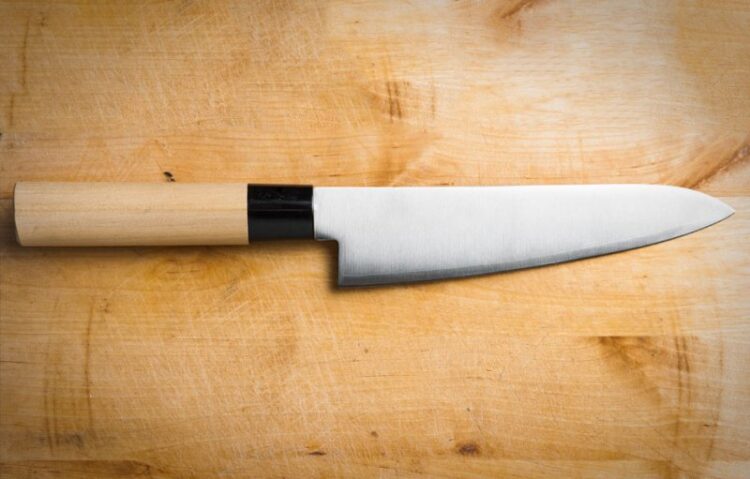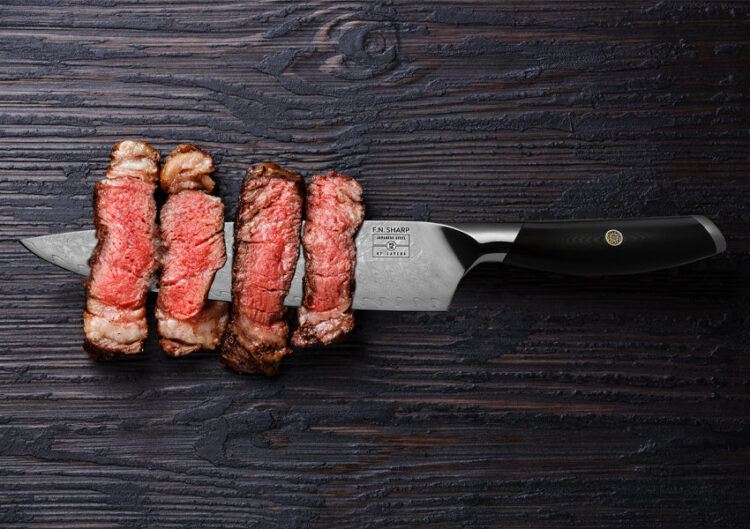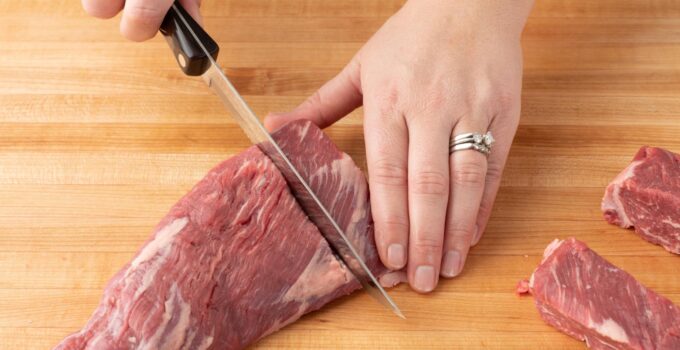Cutting meat doesn’t have to be a difficult task. With a little help from the right knife, this mundane chore can become an enjoyable part of your cooking ritual. In this blog post, we’ll walk you through the different types of knives and explore which one is best for cutting meat. So, get ready to sharpen those skills – it’s time to slice and dice!
Page Contents
Tips for Choosing the Right Knife
When it comes to cutting meat, there are many knife types to choose from that can make the job of slicing, carving, and chopping easier. Choosing the best knife for cutting meat depends on your preferences and needs.
For starters, know that the classic French-style chef’s knife is a versatile tool suitable for cutting all types of food, and it’s ideal for prepping meats such as poultry, beef, and pork. If you’re working with harder or thicker cuts of meat that require more heft while slicing or chopping, then consider a cleaver or Chinese chef’s knife which has a long and straight edge. This type of heavy-duty kitchen tool is useful when butchering larger cuts of meat such as whole chicken or briskets.
When working with smaller pieces of poultry such as wings or legs, a boning knife is best suited for the job. Its sharp point allows you to maneuver around skin, bones, and fat with ease. Along similar lines, a filet knife is designed specifically to work quickly with fish by getting close to delicate bones and removing fat easily from lean flesh.

Source: themanual.com
Finally, specialty knives also known as Achilles especiales in Spanish, are designed specifically for opening shellfish since they have thick blades that don’t easily bend when prying open clams or oysters’ shells. No matter what type of meat you’re preparing in the kitchen, remember that choosing the right type of knife will make all the difference in your finished dish!
Benefits of Different Types
A quality one is essential for cutting meat efficiently and achieving the best results. Different types of knives possess a range of benefits, allowing you to tailor your selection to the specific task. When choosing a knife for cutting meat, consider the following factors:
Scalloped Edge: Scalloped knives have curved teeth along the cutting edge and provide extra slicing power through those teeth, making easy work of thick cuts such as pork chops or beef roasts. With this design, though, users must take care not to crush softer foods when slicing them.
Serrated Edge Knives: Serrated blades come with a jagged saw-like edge that provides both precision and strength in one package. These knives are perfect for delicate items like cakes or tomatoes but also can handle tougher meats with ease — particularly when it comes to juicy steaks that would otherwise tear apart under pressure from a straight-edged knife.
Santoku Knife: It is designed specifically for slicing meats and vegetables into small cubes or dice. Its short blade helps limit food slippage while providing sufficient power to cut through dense proteins like steak or chicken breasts without having to apply too much pressure on the food item itself – thus making it easier on your hands! The Santoku’s versatility also makes it an excellent choice for most kitchen tasks aside from its advantages in slicing meat neatly into cubes and dice.
How to Properly Use a Knife to Cut Meat

Source: fnsharp.com
No matter the type of meat, you should always use a sharp one when cutting. This is to ensure that the cuts are even, predictable and safe. When choosing, the shape and size of the blade should be considered.
However you choose your knife, proper safety is key when handling any kitchen tool—especially those with sharp edges! Remember to hold the blade flat against the surface as you cut; keep your fingers away from the blade at all times; only put pressure down towards the board, not towards yourself; and lastly – make sure your chef’s knife is stored in its sheath or guard when not in use so that anyone reaching into drawers will not inadvertently get hurt.
Knife Care and Maintenance
Having the right one is important when it comes to cutting meat, but it’s also important that you take proper care of your blade to ensure that it stays sharp and efficient for many years to come. Here are a few tips for maintaining your knives:
-Keep your knives sharpened regularly. A dull one will require more effort and pressure when it comes time to cut, resulting in an uneven cut that won’t look appealing on the plate. Invest in a sharpening stone, and be sure to remember which side of the stone each of your knives is intended for; some are meant for only one side, while others can be used both ways.
-Store your knives in a block or sheath. Keeping them exposed in a drawer is not only dangerous but can lead to nicks and scratches which can dull the blade and make them less effective when cutting.
-Wash and dry your knives properly. Don’t let wet blades sit; use warm soapy water and then immediately dry them with a clean cloth or paper towel, as leaving wet blades exposed can also lead to rusting or corrosion over time.
-Make sure you balance pressure evenly when cutting; too much pressure applied on one side can cause warping or bending in the blade long term. The knife should do most of the work for you — all you should have to do is guide it through the food item with gentle yet firm strokes.
Conclusion
When it comes to cutting meat, it is important to select the right tool for the job. A sharp and sturdy one is essential for any cutting task. Depending on the task, a slicing or a carving knife might be more suitable. Choosing a quality knife made of a strong, corrosion-resistant material that fits comfortably in your hand will provide you with precision and control when cutting through tough meats.
It’s also important to consider the size of it and what kind of cutting board you are working on. No matter what type of meat you are preparing, having the proper tools will make all the difference in helping you craft delicious meals for any occasion.





